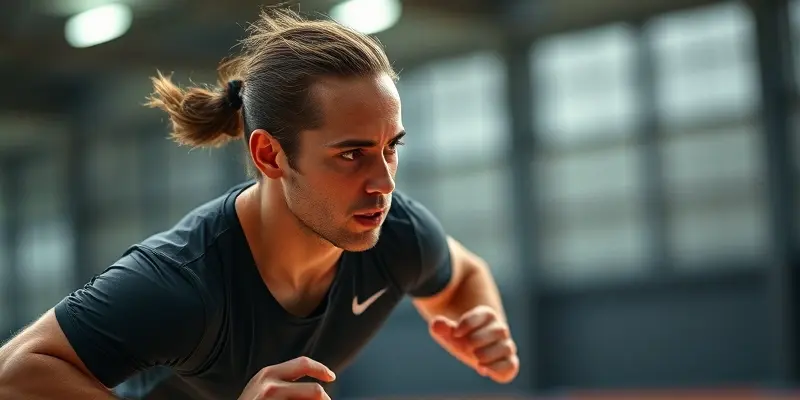Recovery & Injury: Your Actionable Guide to Staying Strong and Healthy
In the pursuit of fitness, whether you’re just starting or you’re a seasoned athlete, injuries and recovery are part of the journey. Managing pain, bouncing back from setbacks, and preventing future issues isn’t just for professionals—it’s vital for anyone aiming to live an active lifestyle. This guide is designed for you: fitness enthusiasts, amateurs, pros, and everyone eager to move, play, and thrive.
Understanding Common Fitness & eSports Injuries
Physical activity and competitive gaming might look different, but the body’s limits are similar. Regardless of your sport, being proactive can save time and pain down the road. Here are common injuries to watch for:
- Wrist, hand, and forearm strains: Repetitive motions (like lifting or mousing) can lead to conditions such as carpal tunnel or gamer’s thumb.
- Neck and lower back pain: Poor posture—at the gym or at a desk—often causes these issues.
- Shoulder and upper back tightness: Static postures and weak core muscles are common culprits.
- More serious issues: Thoracic outlet syndrome or sciatica may develop from prolonged poor ergonomics or lack of movement.
Pro tip: Listen to your body. That odd twinge or numbness is your early-warning system!
Prevention & Recovery: Strategies That Work
Recovery is not just about resting; it’s about smart, active steps to support your body.
Take Regular Breaks & Move
- Stand, stretch, and walk every 30–60 minutes—at work, between sets, or during game sessions.
- Simple movement resets muscle tension and boosts circulation.
Master Ergonomics Everywhere
- Set up your workspace and gym spot for comfort and support.
- Use chairs with lumbar support, keep elbows at right angles, and position screens at eye level.
- Invest in ergonomic tools: keyboards, mice, or properly fitted dumbbells.
Stretching & Strengthening Basics
- Stretch hands, wrists, neck, and back daily.
- Strengthen your upper body and core—try resistance bands or hand grippers.
- Diversify workouts: mix lifting, cardio, and bodyweight routines.
Analogy: Think of your body as a high-performance engine—routine maintenance prevents breakdowns!
Nutrition & Lifestyle: Fueling Faster Recovery
What you eat, drink, and how you rest is just as important as exercise.
- Balanced Diet: Prioritize lean proteins, leafy greens, nuts, and omega-3-rich foods to rebuild muscle and support nerve health.
- Hydrate Properly: Every cell in your body depends on water. Don’t wait to feel thirsty!
- Prioritize Sleep: Aim for 7–9 hours. Quality sleep rebuilds tissues and refreshes your mind.
Example: Pro eSports athletes have nutritionists tailor their diets to reduce inflammation and improve reaction speed. If it works for the pros, it works for you!
For more detailed nutritional strategies, check out our guide on antioxidants in sports nutrition that explains their role in injury prevention and recovery.
The Psychological Edge: Mental Fitness Matters
Physical recovery is only part of the equation—mental resilience speeds up every aspect of healing.
- Acknowledge frustration and stress: Injury can shake your motivation. That’s normal.
- Set small, achievable goals: Chart progress, no matter how minor.
- Stay connected: Lean on trainers, teammates, or online communities for support.
- Practice mindfulness: Deep breathing or visualization keeps you grounded.
Tools & Gadgets to Enhance Recovery
Recovery isn’t just about willpower. The right tools make a difference.
- Massage guns and lacrosse balls: Release tight muscles and improve flexibility.
- Sit-stand desks: Alternate your posture through the day to reduce back strain.
- Hand exercisers: Essential for gamers and weightlifters alike.
Business-use case: Many companies now fund ergonomic tools for remote workers. Advocate for workplace wellness—the benefits add up!
When Should You See a Specialist?
Some warning signs shouldn’t be ignored:
- Persistent pain or numbness
- Loss of function in any joint or muscle
- Pain that interrupts sleep or daily activities
Consult a healthcare provider—preferably one with sports or eSports medicine experience. Early intervention prevents chronic issues.
If you’re interested in a more structured approach to managing recovery, consider our injury recovery checklist that helps you track symptoms and rehabilitation milestones.
Conclusion: Invest in Your Longevity
Recovery and injury prevention aren’t obstacles; they’re stepping stones to lifelong strength and performance. With smart habits, the right fuel, supportive tools, and a resilient mindset, you can move beyond setbacks, whether in the gym, on the field, or at your gaming desk.
Remember, your body is your most valuable teammate—treat it well, and it will reward you with years of active, healthy living.
Stay tuned to GymPulse Club for more science-backed, people-first fitness advice. Your journey continues here!

